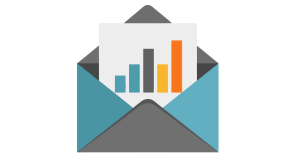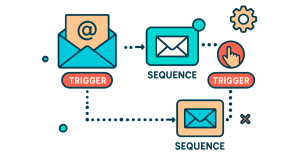At emfluence, we always highlight the importance of sending the right message to the right person at the right time. This “one-to-one, and then some” marketing strategy, as opposed to the “one-to-many” approach of old, is only possible at scale thanks to the availability of sophisticated marketing automation software like the emfluence Marketing Platform. While many different businesses will benefit from this approach, it is essential in the healthcare industry.
While healthcare marketers can segment their patients or clients into different groups like any other marketer, due to the highly personal nature of the industry, they will always benefit from a much more targeted and individualized approach.
How Healthcare Marketers Can Segment Their Audience
Healthcare marketers can segment their patients based on several different criteria. These can include:
- Age: Different age groups have different healthcare needs, from pediatrics to geriatrics.
- Gender: Some healthcare service providers will always need to target specific genders (e.g., women’s health).
- Ethnicity: Some ethnic groups have higher risks of certain conditions than others. There may also be benefits of targeting various ethnic groups when promoting initiatives like blood donation drives and research programs.
- Geographic Location: Access to healthcare facilities and services can vary significantly between urban and rural areas.
- Medical History: Past medical history, including surgeries or ongoing treatments and details relating to any chronic conditions, mental health issues, or other specific medical needs.
- Insurance Details: A patient’s medical insurance status will influence their ability to access specific services.
Targeted Campaigns
With a carefully segmented list, healthcare marketers can easily begin to send targeted campaigns to groups of patients. Even at the most basic level, these could include:
- Seasonal Reminders: These might include reminders for winter flu shots for older or more vulnerable patients.
- Public Health Campaigns: Targeting various groups based on specific campaign objectives.
- Marketing Newsletters: Highlighting important news, service updates, and targeted advice.
These are simple marketing communication strategies that many marketers can handle using fairly rudimental marketing technologies like email marketing software. However, these strategies broadly fall into the previously mentioned “one-to-many” marketing approach. Marketers can deliver a much more personal service with more sophisticated marketing automation technology.
One-to-One, and Then Some
Marketing automation allows us to really dig deep into a patient’s needs and deliver a highly personalized service. This strategy enables marketers to deliver a series of automated campaigns based on previous engagements with your service and its marketing materials. While this might sound like a complicated task, every campaign idea starts with a simple objective.
When setting marketing objectives, it’s crucial to always prioritize your patient’s needs. This approach ensures that your organization’s efforts are focused on addressing the issues that matter most to your patients.
10 Healthcare Marketing Automation Campaign Strategies
The following 10 marketing automation campaign strategies start with a simple objective and are triggered by a series of specific patient engagements.
While these campaigns will require an initial investment in content creation, they are largely evergreen, meaning they have a long shelf-life and can be used many times over. Remember, it doesn’t matter how old a campaign is, as long as the information is still relevant and engaging, it will always appear fresh in the eyes of someone who has never seen it before. Campaigns can be updated as and when new treatments become available.
1. New Patient Welcome Series
Objective: Welcome new patients to your healthcare organization and introduce various services and facilities. These can be triggered after a patient registers with your service online, by phone or in person.
Campaign:
- Email 1: Welcome message introducing your healthcare facility, its services, and the care team.
- Email 2: Provide information about what to expect during their first visit, such as a checklist or video tour of the facility.
- Email 3: Post-visit follow-up asking for feedback and providing additional patient resources such as health tips and information about upcoming events.
2. Appointment Reminders and Follow-ups
Objective: Reduce no-shows and improve patient adherence to follow-up care. This will maximize the efficiency of your service and improve patient outcomes.
Campaign:
- Email 1: Confirmation of appointment sent at the moment of booking.
- Email/Text 2: Appointment reminder sent a week before the scheduled visit.
- Email/Text 3: Reminder sent 24 hours before the appointment.
- Email 3: Post-appointment follow-up with instructions, next steps, and a satisfaction survey.
3. Preventive Care and Screening Campaign
Objective: Encourage patients to schedule preventive screenings. In rural areas, these can be planned around the availability of mobile diagnostic services or visiting healthcare professionals.
Campaign:
- Email 1: Educational content about the importance of preventive care and specific screenings (e.g., mammograms, colonoscopies).
- Email 2: Personalized reminders based on age, gender, and health history, inviting patients to schedule their screenings.
- Email 3: Follow-up after the screening with results (if applicable) and suggestions for ongoing health maintenance.
4. Chronic Disease Management Program
Objective: Support patients with chronic conditions in managing their health. Helping patients effectively manage health conditions like high blood pressure or diabetes reduces the occurrence of those patients requiring emergency treatment or crisis intervention.
Campaign:
- Email 1: Welcome to the program with an overview of available resources and support.
- Email 2: Regular tips and educational content on managing their condition (e.g., diabetes management tips, benefits of a healthy diet and exercise).
- Email 3: This is a regular check-in that asks patients to complete a brief survey about their health status and offers telehealth appointments if needed.
5. Seasonal Health Campaigns
Objective: Promote seasonal health initiatives (e.g., flu shots, summer safety) with a particular focus on preventing disease in vulnerable populations
Campaign:
- Email 1: Announcement of the seasonal health initiative (e.g., “Flu Season is Here: Get Your Flu Shot”).
- Email 2: Educational content about the benefits of participating (e.g., why flu shots are important).
- Email 3: Call to action with easy online scheduling for relevant services.
6. Reactivation Campaign for Inactive Patients
Objective: Re-engage patients who haven’t visited in a while and may benefit from a quick check-up.
Campaign:
- Email 1: Friendly message reminding them of the importance of regular check-ups.
- Email 2: Offer a special incentive for returning (e.g., discounted consultation, health screening package).
- Email 3: Final call to action with a link to schedule an appointment.
7. Post-Treatment Care and Education
Objective: Ensure patients follow post-treatment care plans and stay informed, improving patient outcomes and reducing the need for additional procedures.
Campaign:
- Email 1: Detailed post-treatment care instructions immediately after the procedure.
- Email 2: Educational content on recovery and what to expect.
- Email 3: Follow-up survey to assess recovery and offer additional support if needed.
8. Patient Satisfaction and Feedback Loop
Objective: Gather feedback to improve services and patient experience. Visiting a healthcare facility can be stressful, and patients won’t always highlight any problems they experience while attending an appointment. A poor experience may result in patients not returning and negative reviews posted to Google.
Campaign:
- Email 1: Post-visit survey sent 24 hours after the appointment.
- Email 2: Follow up by thanking them for their feedback and informing them of any improvements or changes made based on patient input.
- Email 3: Quarterly newsletter with updates on how patient feedback has shaped the healthcare organization.
9. Educational Webinar Series
Objective: Position your organization as a thought leader in its field and provide valuable health education. By educating your individuals to monitor and manage their own health, they become better equipped to spot health issues before they become more significant problems, resulting in better outcomes for the patient.
Campaign:
- Email 1: Invitation to a free webinar on a relevant health topic (e.g., “Managing Stress During the Holidays”).
- Email 2: Reminder email with details on how to join the webinar.
- Email 3: Follow up after the webinar with a recording, additional resources, and a survey on its effectiveness.
10. Healthcare Provider Spotlight
Objective: Humanize your organization and build trust by highlighting healthcare providers. This will help patients feel like they know their healthcare provider before they meet them in person and enable them to be more comfortable sharing their healthcare issues.
Campaign:
- Email 1: Introduce a featured healthcare provider, sharing their background, specialities, and patient care philosophy.
- Email 2: Share a patient testimonial or success story related to the provider’s care.
- Email 3: Invite patients to schedule an appointment with the provider, offering a limited-time consultation discount.
These campaigns can be further enhanced by integrating SMS/Text messaging reminders, deploying personalized patient online portals, and social media campaigns to ensure a more holistic approach to patient care and communication.
Book Your Appointment with a Healthcare Marketing Professional Today
To learn more about how the healthcare marketing professionals at emfluence can help you build a healthier marketing automation strategy, book an appointment today at expert@emfluence.com.
For a visual guide to implementing these strategies, download our Healthcare Marketer’s Map to Marketing Automation Success.


